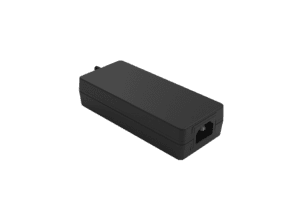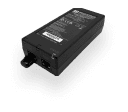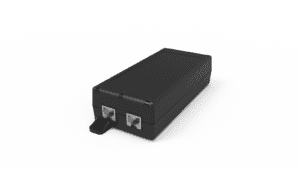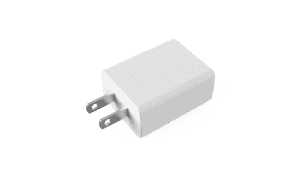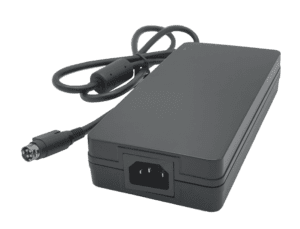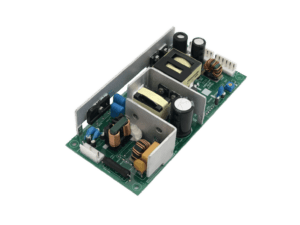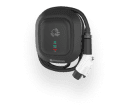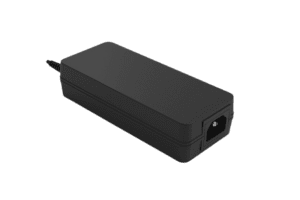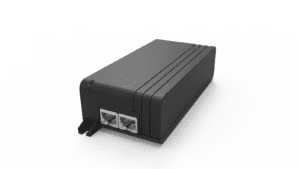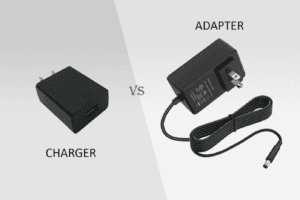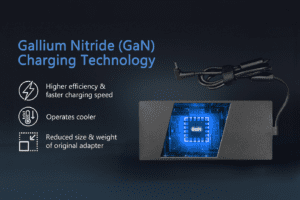BLOG
AMR Docking Station Manufacturer: How to Design Fast Auto-Align Charging Docks for Warehouse Robots
QUICK LINKS
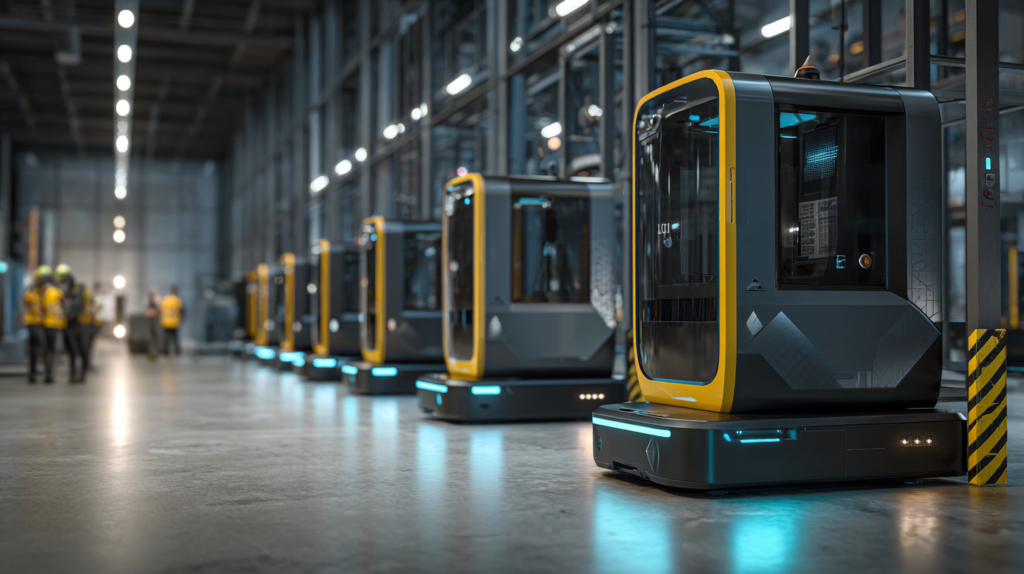
Why Fast Auto-Align Docking Is Critical for Warehouse AMRs
In modern warehouses, automated mobile robots (AMRs) are the backbone of fulfillment speed and operational efficiency. But like any battery-powered system, AMRs are only as useful as their ability to stay charged and ready to work. That’s why fast, reliable auto-align docking stations are no longer optional—they are a critical enabler of round-the-clock AMR productivity.
Traditional manual or guided charging methods cause delays, require human intervention, or fail to connect reliably. Auto-align docks eliminate these inefficiencies by allowing robots to self-navigate and connect precisely to a charging interface without human input, even in low-light or high-traffic zones.
For warehouse applications running 24/7, charging time and dock uptime become key performance indicators (KPIs). A well-designed dock must enable accurate alignment, fast charging handoff, minimal power loss, and robust physical contact—even after thousands of docking cycles.
Top Features
- Precision guidance using fiducial markers, LIDAR, or visual SLAM
- Multi-contact, self-cleaning charging pins or magnetic couplers
- Real-time power handoff with high-efficiency DC charging
Top Benefits
- Reduces charging cycle time and increases robot uptime
- Supports autonomous charging routines without human assistance
- Minimizes alignment failure and wear on connectors over time
Best Practices
- Use tapered guides or magnetic alignment to aid robot positioning
- Ensure redundancy in power contacts for high-reliability docks
- Design for 10,000+ connection cycles with minimal maintenance
In logistics operations where seconds matter, a fast, self-aligning dock keeps AMRs powered, efficient, and autonomous.
How to Engineer High-Efficiency DC Charging into AMR Docking Stations
AMR fleets demand fast charging to minimize idle time and keep mission-critical robots in motion. To meet this requirement, OEMs must design docking stations with high-efficiency, low-loss DC charging systems that can deliver consistent voltage with minimal thermal load.
Charging power typically ranges from 200 W to 1 kW, depending on battery size and mission cycle. High-efficiency AC-DC converters with active PFC and intelligent charging profiles are essential to manage charge rates and battery longevity.
Fast charging doesn’t just mean more current—it requires carefully tuned voltage curves, temperature monitoring, and communication with the robot’s battery management system (BMS). Smart docks automatically adjust output based on SoC (state of charge), temperature, and battery chemistry.
Top Features
- 92–95% efficient DC output with programmable voltage
- Communication interfaces (CAN, UART, RS-485) for BMS integration
- Over-voltage, over-temp, and inrush protection
Top Benefits
- Reduces power waste and heat buildup in charging enclosures
- Extends battery life with adaptive current management
- Enables faster turnaround between missions without battery stress
Best Practices
- Integrate digital charging controllers with real-time feedback
- Use modular power bricks for scalable charging station design
- Include smart derating logic to protect batteries during ambient heat spikes
Efficiency isn’t just about saving watts—it’s about keeping AMRs in service longer, charging smarter, and requiring less downtime to get back on task.
Key Mechanical Design Considerations for Durable, Repeatable Docking
Warehouse environments are harsh: dust, vibration, floor debris, and human traffic all impact the long-term reliability of AMR charging docks. That’s why mechanical design must prioritize repeatability, durability, and fail-safe alignment.
Docking stations should support both guided entry (using tapered walls, V-frames, or roller channels) and mechanical compliance—allowing slight misalignment without causing failed connections. Charging pins should be gold-plated or self-cleaning, with spring-loaded contacts or magnetic alignment to ensure solid connection across thousands of cycles.
It’s also important to account for different robot models, which may vary in wheelbase, turning radius, and connector placement. Modular design allows OEMs to adapt the dock base or contact head while using a common electrical core.
Top Features
- Spring-loaded pogo pins or magnetic connectors
- Compliant mechanical mounts to absorb docking shock
- IP54+ enclosure rating for contact protection
Top Benefits
- Minimizes wear and tear under constant alignment and docking
- Supports multiple AMR models with minimal retrofit
- Reduces unplanned maintenance and charger replacement cycles
Best Practices
- Design contact points with swappable inserts for quick service
- Protect critical contact zones from debris using shields or shrouds
- Validate alignment tolerance through robot simulation before tooling
Great docking isn’t just about electricity—it’s about mechanical precision that never fails, even under real-world warehouse conditions.
CLIENT'S QUOTE
"Phihong’s PoE solutions have made a huge difference for us! Our network runs more efficiently, and we’ve seen real cost savings. We couldn’t be happier!"
Smart Docking with BMS Integration and Real-Time Telemetry
The smartest AMR docking stations don’t just charge—they communicate. As warehouse automation scales, charging docks are increasingly integrated into fleet management systems and robotics middleware. OEMs must design docks that can exchange real-time data with the robot’s battery management system (BMS) to monitor charging progress, detect faults, and issue predictive maintenance alerts.
This communication is usually handled over CAN bus, UART, or RS-485, and may be integrated into an existing ROS2 or proprietary fleet controller. Data exchanged may include:
- Battery voltage, current, and SoC
- Internal temperature and cycle count
- Error flags or overvoltage warnings
- Charge start/stop commands and authentication
Integrating smart telemetry into the dock improves safety and enables automated dispatch of AMRs based on energy levels. It also allows operators to analyze usage patterns and optimize charging schedules, especially during peak load periods.
Top Features
- BMS handshake and charge authorization via secure protocol
- Live data streaming to fleet manager or cloud dashboard
- OTA firmware update capability for dock-side controllers
Top Benefits
- Reduces risk of overcharging or charging unsafe batteries
- Enables diagnostics and service planning
- Supports dynamic charge queueing and energy distribution
Best Practices
- Use standardized communication protocols across all AMR models
- Build redundant data pathways for mission-critical fleet operations
- Store charge session logs for warranty and analytics support
Smart docking enables not just efficient energy transfer, but intelligent fleet coordination and safer energy management at scale.
Safety, Certification, and Regulatory Standards for AMR Charging Infrastructure
As AMRs become more prevalent in commercial logistics, charging infrastructure must meet electrical safety, EMC, and reliability standards. OEMs designing docking stations must ensure compliance with the following:
- UL 61010 or IEC 62368 for industrial chargers
- CE and FCC Class A for EMI compliance
- IP54 or IP65 ingress ratings for warehouse-grade protection
- ESD and surge protection in electrostatically active zones
Safety features must be embedded at multiple levels:
- Physical: Shock-resistant housings, locked charging heads
- Electrical: Overvoltage, overcurrent, thermal shutdown
- Software: Fail-safes, watchdog timers, status alerts
Additionally, OSHA and ANSI standards may apply to public or employee-accessible charging docks in warehouses and fulfillment centers.
Top Features
- UL/IEC certified AC-DC conversion modules
- Double insulation and ground fault detection
- EMC shielding and harmonic compliance (IEC 61000 series)
Top Benefits
- Meets buyer requirements for certified and safe equipment
- Reduces warranty claims and in-field failures
- Builds trust with logistics and industrial automation buyers
Best Practices
- Validate dock design through third-party pre-compliance testing
- Use power supplies already tested to global safety standards
- Incorporate LED fault indicators or mobile alerts for non-technical users
Compliance isn’t just a checkbox—it’s an investment in reputation, reliability, and long-term deployment success.
How Phihong USA Supports AMR Docking OEMs with Scalable Charging Solutions
Phihong USA designs and manufactures power systems engineered for AMRs, AGVs, and warehouse automation. Our high-reliability AC-DC platforms and modular DC chargers are trusted by OEMs globally to power next-generation robotics.
We help AMR docking station manufacturers by offering:
- Rugged, compact DC chargers (200 W to 1.5 kW) with programmable output
- Modular power bricks with active PFC and high efficiency (up to 95%)
- IP-rated connector systems and pogo-pin modules
- Firmware development for BMS integration (CAN/UART)
- Pre-tested designs for UL, CE, FCC, and IEC compliance
- Support for hot-swappable charging bays and contact assemblies
Whether you’re building for indoor fulfillment centers or 24/7 logistics facilities, Phihong delivers reliable, safe, and scalable power solutions to keep your robots charged and your warehouse on time.
To request engineering support or product samples, contact usasales@phihongusa.com or visit www.phihong.com.

Contact Our Team Today!
Our dedicated sales team and international partners are prepared to support you with your latest projects and initiatives globally.
Explore More with Phihong USA
As we conclude our exploration of PoE technology, it’s evident how these innovations are streamlining power and data integration across various industries. Phihong USA stands at the forefront of this technological advancement, offering a diverse range of power solutions designed to meet the evolving needs of modern industries.
Phihong USA’s extensive product lineup includes:
- Power over Ethernet (PoE) Solutions: Delivering reliable power and data transmission over a single cable, ideal for simplifying network installations and reducing costs.
- AC/DC Adapters and Power Supplies: From compact adapters to industrial-grade power supplies, Phihong provides solutions that ensure efficiency and reliability in various applications.
- Battery Chargers: Customizable chargers for lithium-ion and lead-acid batteries, supporting a wide range of power requirements for mobility and industrial applications.
- Medical Power Supplies: Specialized power solutions designed to meet the stringent requirements of the healthcare industry, ensuring safety and reliability.
Phihong USA is committed to innovation and excellence, continually developing products that meet the highest standards of performance and reliability. Their global reach and dedication to customer support make them a trusted partner in powering the future.
Here are some useful links to explore Phihong USA’s offerings further and bring in new potential clients:
Visit Phihong USA to discover how their advanced power solutions can support your business needs. Whether you’re looking to upgrade your network, or find reliable power supplies, Phihong USA has you covered.
By choosing Phihong USA, you’re partnering with a leader in power technology, ensuring your operations run smoothly and efficiently with top-tier power solutions. Contact Us today!
FAQ
What makes a good auto-align AMR docking station?
A good auto-align docking station allows warehouse AMRs (Automated Mobile Robots) to connect to a charging interface quickly, accurately, and without human intervention. The core purpose is to reduce downtime and eliminate the need for manual positioning or supervised connections. For this to work, both mechanical alignment and electrical contact quality must be engineered with precision.
Key physical features include tapered alignment guides, magnetic attraction points, or fiducial markings that help the robot position itself perfectly with the charger. Once docked, spring-loaded contacts or pogo pins deliver power with minimal resistance. In high-dust or vibration-prone environments, these connectors must be robust, self-cleaning, or covered by retractable guards.
From a system perspective, a smart docking station also includes handshake protocols between the dock and the robot’s BMS (battery management system). This enables safe charging based on battery state, avoids overcharging, and logs data for fleet maintenance.
Ultimately, a good auto-align dock:
- Connects within seconds
- Works across repeated high-cycle use (10,000+ connections)
- Requires little to no human maintenance
- Integrates with warehouse automation platforms
Such a system dramatically increases the ROI of robotic fleets by reducing idle time and simplifying infrastructure requirements.
How fast should an AMR charging dock charge?
Charging speed for AMRs depends on several variables, including the robot’s battery size, mission cycle length, and the operating environment. Most AMRs use lithium-ion batteries with capacities ranging from 1 to 3 kWh. A typical warehouse mission might last 4 to 8 hours, followed by 30–90 minutes of charging.
For standard operations, a 500 W to 1 kW charge rate provides a balanced mix of charging speed and battery longevity. However, fast-charging docks capable of up to 1.5 kW or more are increasingly used to minimize downtime, especially in 24/7 fulfillment centers or high-utilization environments.
Fast charging must be paired with adaptive charge control, including:
- CC/CV profiles (constant current/constant voltage)
- Real-time thermal monitoring
- Communication with the robot’s BMS
Without this, fast charging can degrade battery health, increasing the total cost of ownership. Some smart docks reduce charge current during high ambient temperatures or based on battery condition to preserve long-term performance.
In summary, the ideal charging speed is fast enough to maximize robot uptime while ensuring battery safety and life cycle durability. OEMs should also build in scalability, allowing operators to configure charge rates based on specific mission profiles.
Can one docking station support multiple AMR models?
Yes, and this is increasingly becoming a requirement for facilities that operate mixed fleets or plan to upgrade robots over time. A well-designed AMR docking station can support multiple robot models by using a modular physical design combined with programmable power delivery and multi-protocol communication interfaces.
Mechanically, this can be achieved by:
- Adjustable or interchangeable connector arms or guide rails
- Swappable charging head assemblies
- Universal footprint docking platforms
Electrically, smart chargers must support a range of voltages (typically 24–60 V) and be able to identify each robot’s charging protocol via CAN, UART, or RS-485. The charger should detect the robot’s identity (via handshake or RFID) and apply the correct power profile.
This multi-robot capability reduces infrastructure costs and allows operators to scale or upgrade robot fleets without replacing the charging ecosystem. It also supports third-party robot integration—critical for warehouse operators managing diverse equipment.
In practice, OEMs should design docks with:
- Adjustable voltage output
- Configurable BMS communication firmware
- Mechanically flexible charging ports
The result is a future-ready solution that adapts to changing needs and simplifies logistics planning across AMR ecosystems.
What certifications should an AMR charging dock meet?
Charging docks for AMRs used in industrial or warehouse settings must comply with a range of certifications to ensure electrical safety, EMI compliance, durability, and user safety. Depending on your geographic region and use case, the following standards are most commonly required:
- UL 61010-1 or IEC 62368-1: For electrical safety
- CE and FCC Class A: For electromagnetic interference (EMI)
- IEC 61000 series: For ESD, surge protection, and harmonics
- IP54 or IP65 ingress ratings: For protection against dust and water
For AMRs operating in facilities with strict workplace safety regulations (e.g., food-grade or clean rooms), additional certifications may apply, including OSHA or ANSI-related workplace compliance.
Also consider:
- RoHS and REACH for material safety and environmental compliance
- ISO 13849 or ISO 10218 for robotic safety systems (if human-facing)
Phihong’s industrial-grade power modules are pre-tested against these standards, making it easier for OEMs to integrate compliant power subsystems into their docking platforms.
Always coordinate with your regional compliance authority or third-party test lab early in the design process to avoid costly delays later.
How does Phihong help AMR OEMs build better docking stations?
Phihong USA helps AMR and robotics OEMs build smarter, safer, and faster-charging docking stations with industrial-grade reliability. We offer modular power platforms and support full integration of mechanical, thermal, and firmware components—so your docking system is not only efficient but certifiable and scalable.
Our support includes:
- Ruggedized AC-DC modules (200 W to 1.5 kW+)
- High-efficiency charging systems with programmable output
- IP-rated contact designs, pogo pin assemblies, and spring-loaded interfaces
- Support for CAN/UART-based BMS communication
- Pre-compliance testing for UL, CE, FCC, and IEC standards
- Engineering resources for integration, prototyping, and certification
Whether you’re launching your first warehouse AMR system or scaling to a global logistics fleet, Phihong provides the expertise, manufacturing support, and high-reliability hardware to make your dock solutions future-proof.
We don’t just sell chargers—we partner in innovation. Contact us today at sales@phihongusa.com to discuss your next project.

